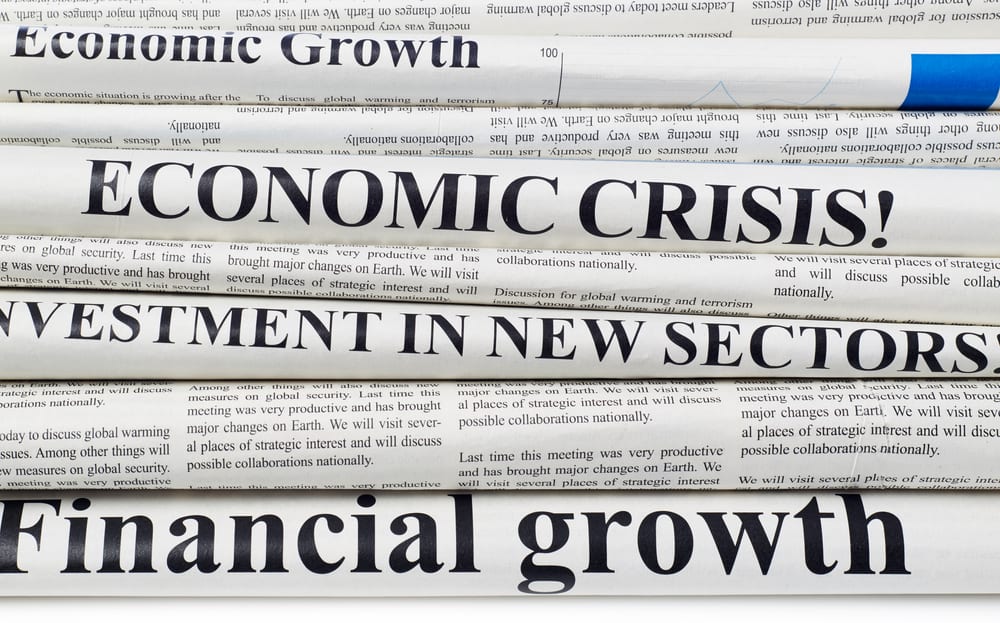Financial markets may be built on earnings, valuations, and balance sheets — but in the short term, they are often driven by something much more unpredictable: events. From unexpected geopolitical developments and natural disasters to company-specific announcements and regulatory shifts, event-driven situations can send ripples (or tsunamis) through the stock market in mere hours.
Ma in che modo questi eventi influenzano realmente i prezzi degli asset? Perché i titoli si impennano o crollano in seguito a notizie che non sembrano correlate ai fondamentali di lungo periodo? E soprattutto, come possono gli investitori quotidiani interpretare e potenzialmente posizionarsi durante questi momenti di volatilità?
Let’s take a closer look at how event-driven factors shape market movements — with real examples, current insights, and a few practical takeaways for investors navigating an unpredictable world.
Che cos'è una situazione guidata dagli eventi?
An event-driven situation is any occurrence — economic, political, environmental, or corporate — that disrupts the status quo and prompts investors to reevaluate risk and opportunity. These events can be:
- Geopolitica: Conflitti, elezioni, sanzioni, controversie commerciali.
- Macroeconomia: Decisioni sui tassi di interesse, shock inflazionistici, recessioni.
- Azienda: Operazioni di fusione e acquisizione, sorprese sugli utili, scandali e fallimenti.
- Naturale o sistemico: Pandemie, terremoti, attacchi informatici, modifiche normative.
Ognuno di questi eventi introduce incertezza, che i mercati intrinsecamente non amano. Ma creano anche opportunità, soprattutto per coloro che comprendono i meccanismi alla base della reazione.
Casi di studio: Come gli eventi hanno mosso i mercati
Let’s look at a few recent examples to understand how different events shaped market behavior:
- The Russia–Ukraine War (2022–2023)
The invasion caused an immediate spike in oil and gas prices, pushing Brent crude over $ 120 per barrel in early 2022. Energy stocks rallied, while European equities — especially those in Germany and Italy — slumped due to exposure to Russian energy. Defensive sectors like utilities and consumer staples outperformed.
→ Lesson: In global conflicts, commodities and safe havens tend to surge, while exposed regions or sectors decline. - Crollo della Silicon Valley Bank (marzo 2023)
L'inatteso fallimento di SVB ha innescato un più ampio crollo delle banche regionali statunitensi. Nonostante l'intervento del governo americano a garanzia dei depositi, l'indice KBW Nasdaq Bank è sceso di oltre 20% in poche settimane. Questo evento ha ravvivato i timori di un rischio sistemico, con ripercussioni anche sui titoli finanziari non correlati.
→ Lesson: Contagion fears can spread quickly — and sector-wide reactions are common, even when fundamentals differ. - Primarie presidenziali statunitensi del 2024 e riprezzamento del mercato
Nei primi mesi della campagna elettorale del 2024, i titoli tecnologici statunitensi hanno mostrato una maggiore sensibilità ai dibattiti sulle imposte societarie e sulla regolamentazione dell'IA. Il NASDAQ ha subito una breve correzione di 6% nel giugno 2024 dopo che la proposta di legge antitrust ha guadagnato trazione.
→ Lesson: Political rhetoric and regulatory threats can have immediate market impact — especially in concentrated, high-growth sectors.
Perché i mercati reagiscono così rapidamente (e spesso in modo eccessivo)
In the digital age, information spreads instantly. Algorithms read headlines and execute trades before most humans even finish the first paragraph. This creates sharp, knee-jerk reactions in both directions — often exaggerated in the short term.
La finanza comportamentale aggiunge un ulteriore livello. Dominano la paura e l'avidità. Gli investitori tendono a vendere prima e a fare domande dopo quando vengono colti di sorpresa da un evento negativo, provocando bruschi ribassi che potrebbero non riflettere l'impatto a lungo termine. Allo stesso modo, l'euforia può portare a condizioni di ipercomprato dopo una notizia positiva.
Una ricerca di JPMorgan (2023) ha mostrato che oltre 60% della volatilità giornaliera del mercato S&P 500 è ora determinata da eventi non fondamentali. — a dramatic shift from just 30% in the early 2000s.
Come gestire la volatilità guidata dagli eventi come investitore al dettaglio
Unlike institutional traders or hedge funds, most retail investors don’t have the tools to profit from momentary price swings. But that doesn’t mean you’re powerless. Here are a few principles to keep in mind:
- Zoom out: If the event doesn’t change a company’s fundamentals, the price will often revert over time.
- Rimanere diversificati: Un portafoglio adeguatamente diversificato limita l'esposizione agli shock di una singola regione o di un singolo settore.
- Evitare il panico: Le reazioni emotive sono nemiche della performance a lungo termine. I dati storici dimostrano che vendere durante una crisi di panico porta quasi sempre a rendimenti peggiori.
- Imparare a riconoscere le reazioni eccessive: I cali dovuti a eventi possono offrire punti di ingresso in attività di qualità a prezzi scontati.
Per coloro che hanno un profilo più avanzato, alcuni investitori usano opzioni per coprire il rischio di ribasso o trarre profitto dalla volatilità. Altri monitorano spread di credito e indici di volatilità (come il VIX) per valutare il sentimento del mercato durante i periodi di turbolenza.
Adattare la propria strategia in un mondo imprevedibile
If the past few years have taught us anything, it’s that “normal” is constantly being redefined. Events — whether predictable like elections or sudden like geopolitical shocks — will continue to impact markets in unpredictable ways.
The key for retail investors isn’t to predict the next headline but to understand how markets typically react to them. Building a resilient, adaptable investment plan means accepting volatility as part of the journey — not a signal to abandon ship.
So next time the markets swing wildly on a newsflash, take a breath. Ask yourself: has the long-term picture truly changed? If not, you may be witnessing another short-term tremor in a much larger — and navigable — financial landscape.
Rimanere informati, rimanere investiti
La volatilità dovuta agli eventi fa parte del gioco degli investimenti. Ma con la giusta mentalità e un portafoglio ben strutturato, è possibile trasformare l'incertezza in opportunità.

